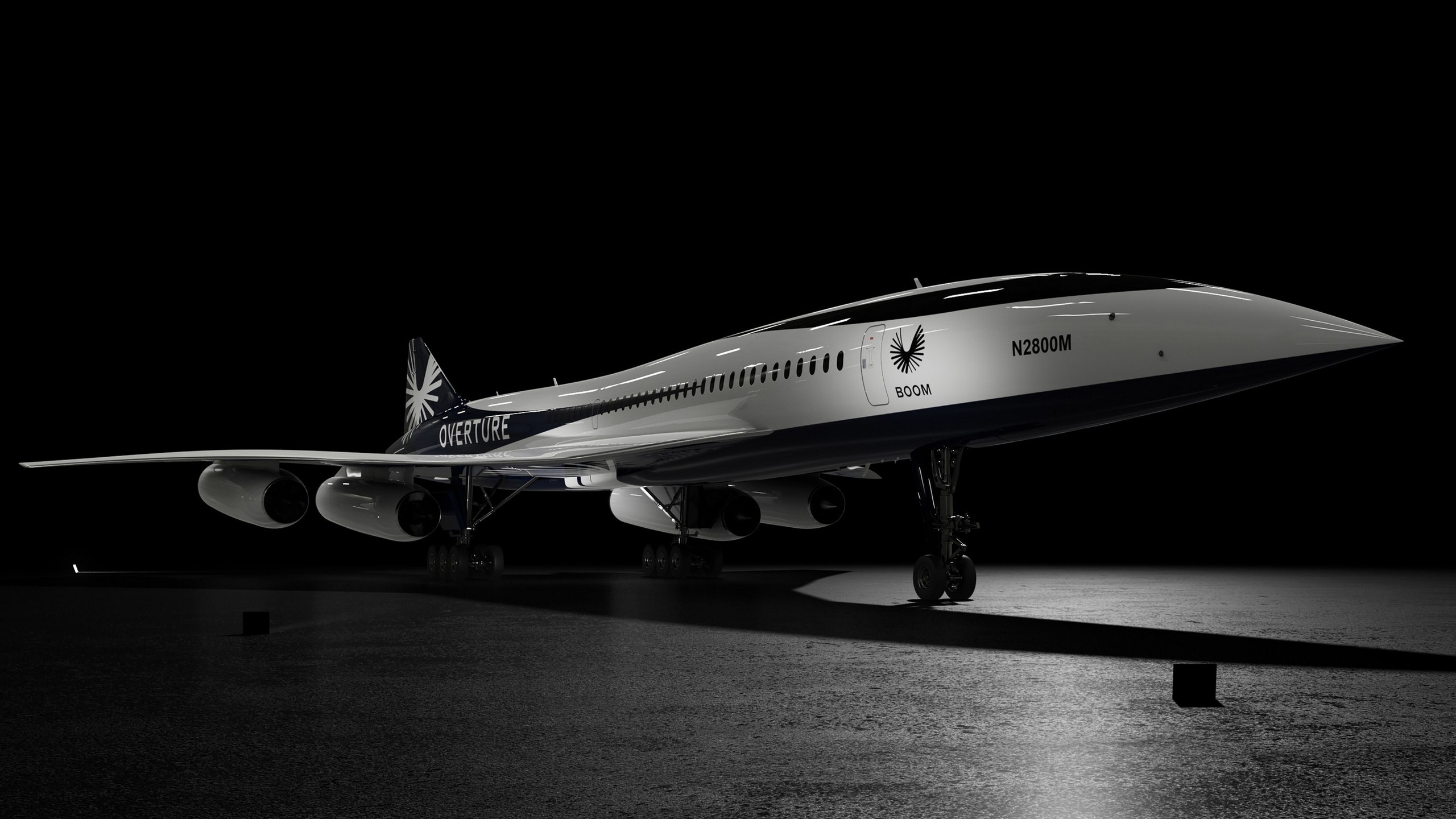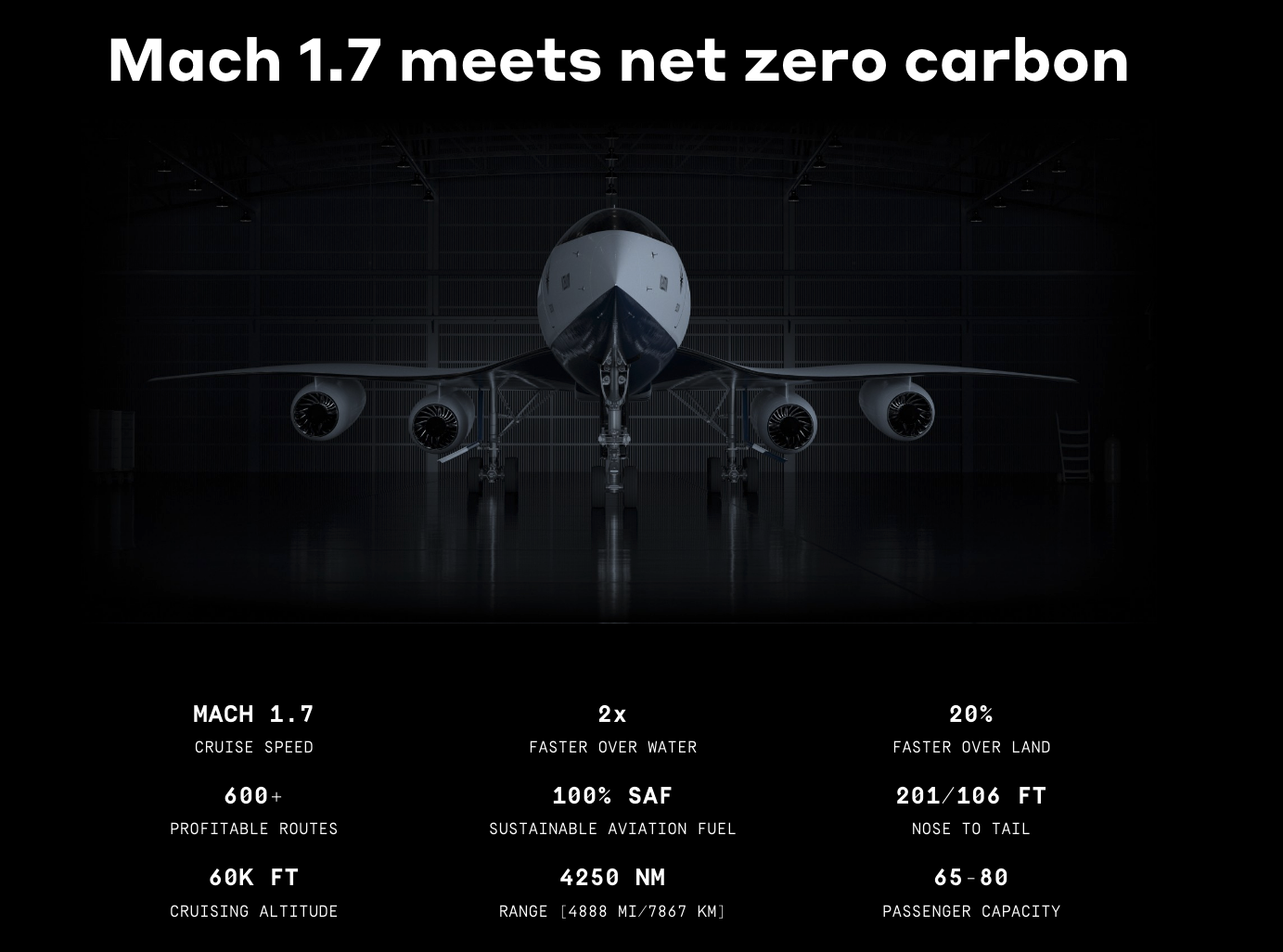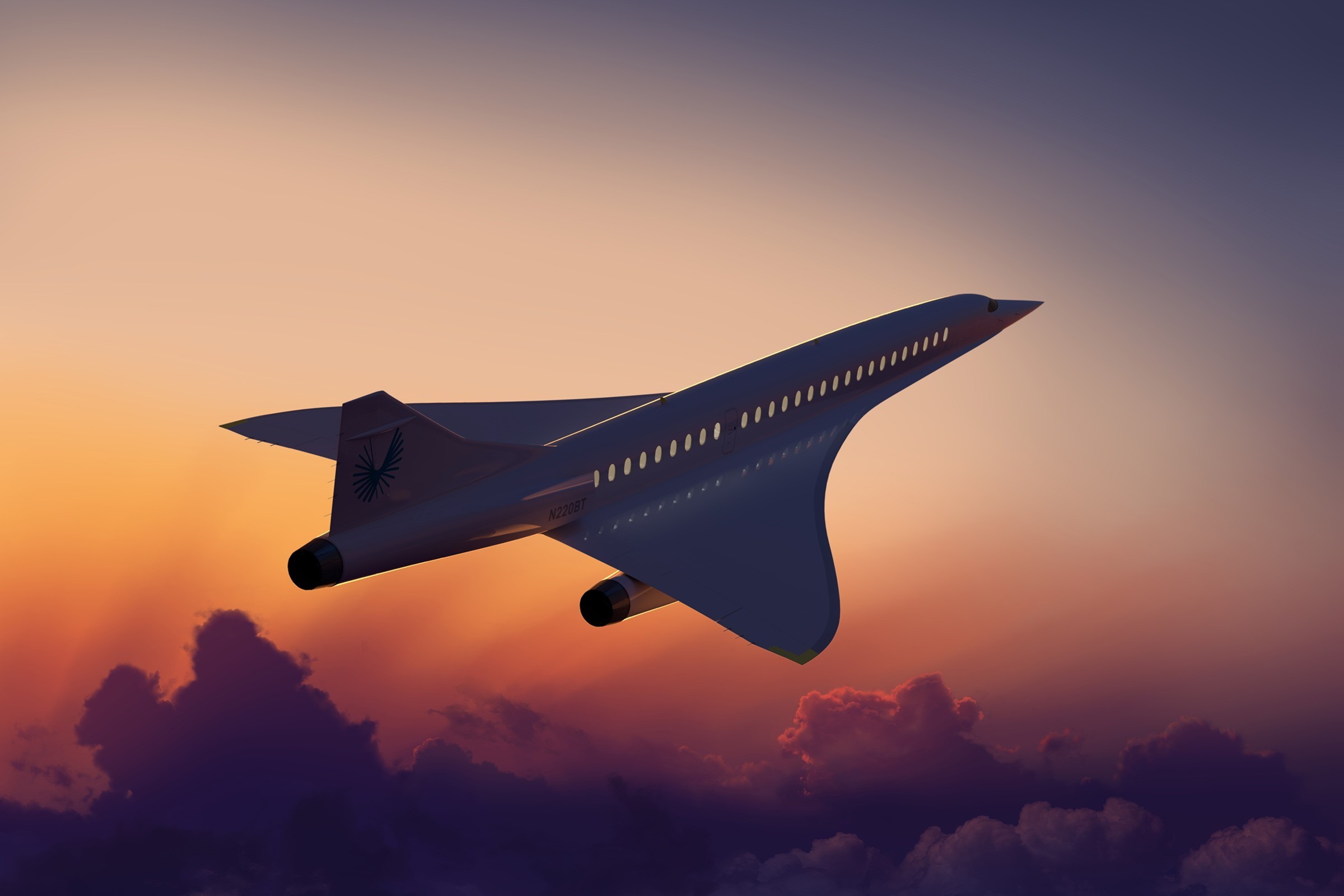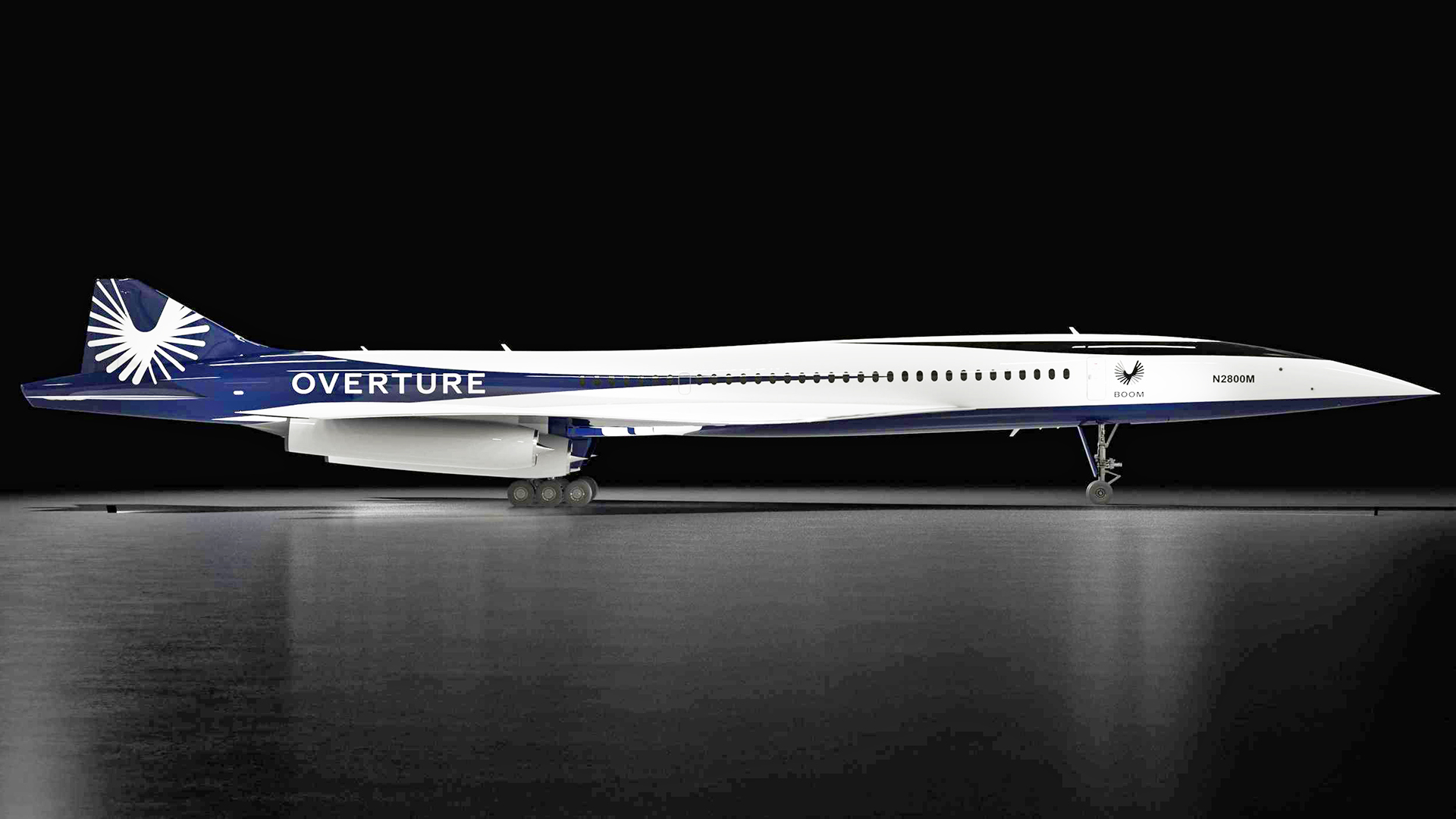Northrop Grumman and Boom Supersonic have announced a collaboration to develop a variant of the future Overture supersonic airliner specifically for the U.S. and allied military forces. The agreement was finalized at Farnborough International Air Show in the United Kingdom without much additional detail, but the partnership would act as Boom Supersonic’s first direct link with the defense industry since collaborating with the U.S. Air Force to advance supersonic travel for commercial and potential military needs.
The official announcement released by Northrop Grumman states that the collaborative agreement will aim to provide the U.S. military and its allies with new supersonic aircraft offerings. The special-mission variant (or variants) will use Boom Supersonic’s Overture aircraft as a starting point to then later be equipped with unspecified Northrop Grumman-made airborne defense systems. The announcement goes on to claim that the potential Overture variant could provide the military with the speed needed to execute “rapid-response missions.”
“Fitted with specialized capabilities, the aircraft could be used to deliver medical supplies, provide for emergency medical evacuation or surveil vast areas faster than conventional aircraft,” read the announcement. “The special mission Overture variant could also be used to coordinate other aircraft and ground assets in a variety of scenarios.”
Breaking Defense also reported on the collaboration and spoke with Tom Jones, Northrop Grumman’s president of Aeronautics Systems, who lauded the significant increase in payload capacity for supersonic aircraft that Overture will hopefully provide. Although, Jones went on to himself admit that the requirements for such a program are yet to be understood.
As can be gathered, the intended mission for the military Overture variant is still relatively broad. While that could be chalked up to the agreement simply being in its early stages, it is also important to note that Boom Supersonic’s relationship with the military only recently started to blossom. The startup, which is based out of Denver, Colorado, was founded in 2014 and is centered around researching and developing advanced means of supersonic flight, predominantly for the commercial market as was the reasoning behind the introduction of the Overture concept in the first place. In fact, the first one-third-scale flying prototype of the future Overture airliner, also known as the ‘Baby Boom’, was unveiled in October 2020.

Founded by CEO Blake Scholl, the company is aiming to essentially cut the travel time of certain flight routes in half. Boom Supersonic’s 65- to 85-passenger airliner concepts will be designed to fly at Mach 1.7 over water and Mach 0.94 over land with a range of 4,250 nautical miles, according to statements made by Scholl at Farnborough International Air Show. Before the company’s agreement with Northrop Grumman was reached, however, Boom Supersonic’s Overture had existed on the U.S. Air Force’s radar for a couple of years.

Beginning in February 2020, the Air Force teamed up with Boom to explore a configuration of Overture intended specifically for government executive flight. This partnership didn’t come as a huge surprise being that a supersonic transport would be very attractive to the world’s wealthiest people who already pay huge sums of money to fly private, largely to save time. The Air Force could leverage Overture to move key government officials around the globe much faster than the traditional airliner conversions it uses now. In fact, the Air Force was so interested in this potential capability that it redirected funding from the Air Force Two replacement program toward studying it further.

In 2017, Lockheed Martin joined forces with Aerion — at the time something of a loose competitor to Boom — to develop the AS2 supersonic business jet. Lockheed Martin subsequently decided not to renew their partnership with Aerion and Boeing took its place.
These collaborations were largely reminiscent of the partnership now forming between Northrop Grumman and Boom. This is because when the announcement of the Lockheed Martin-Aerion team-up was made, the potential military applications that the program could inspire were similar. While there were no plans to weaponize the AS2, the aircraft’s Mach 1.4 speeds and streamlined airframe could have offered the military the impressive transit times and room for surveillance and electronic warfare capabilities now potentially presented by the Overture. Unfortunately, in 2021, it was announced that Aerion’s assets would be liquidated after the company struggled to raise the capital needed to proceed with the AS2 program.
Back when the announcement was made that Lockheed Martin would work together with Aerion, we laid out the many ways a supersonic transport could be leveraged by the military, which align with the potential applications now being posited by the Northrop Grumman-Boom alliance.
The rapid transit use case for the militarized Overture, as implied in the announcement, could include realizing the goal of rapid cargo and personnel transport that has become a major goal of the Air Force. The Air Force has been looking towards rockets, such as Space-X vertical landing types in a suborbital configuration, to achieve the ability to move people and cargo very quickly around the globe under contingency circumstances, but a long-range supersonic aircraft such as Overture could potentially meet a portion of this demand, and in a far less exotic way.

The commercial variant of Overture is slated to enter production in 2024, start flight tests in 2026, and begin carrying passengers in 2029, but the timeline for the special-mission Overture has yet to be revealed. It is important to remember, though, that this area of aerospace development is rife with risk, technological hurdles, and is extremely capital intensive. Any and all these elements could influence a projected fielding schedule, that is if a production representative Overture ever even makes it to construction, let alone flight testing. Depending on how the relationship evolves, Northrop Grumman could become a deeper partner as it is one of America’s prime airframers capable of producing significant numbers of complex aircraft.
Each commercial airliner could clock in at about $200 million a pop according to Boom, which some regard as an optimistic figure, and a potential military configuration would most certainly cost more. Boom’s Scholl has also insisted that the militarized Overture will operate in fundamentally peaceful applications, shutting down the prospect of any weapons additions at present.

All in all, Overture’s intriguing mix of range, payload capacity, and speed are its selling points for the defense sector, as is its potential semi-off-the-shelf availability. While the involvement of Northrop Grumman is a promising sign for the ambitious company, the same was said when Aerion was joined by Lockheed Martin, and then Boeing. Hopefully, many things will go right for Boom, and we can once again enjoy an age of supersonic passenger transport not seen since Concorde’s demise two decades ago, and the possibility of military variants taking on a number of missions that no other aircraft on earth can currently perform in the same fashion.
Contact the author: Emma@thewarzone.com
